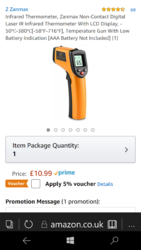My initial post was clearly misleading, I have found the extract from BS 8204, see below. The point I was trying to make is that forced drying using a high heat can damage a gypsum based screed. Turning the heat up gradually after a week is fine, but do not ramp it up quickly or raise it to a high heat. It can also be very deceptive as to how dry a Gypsum screed is. The carbide moisture test is a very good way of establishing if the screed has reached the required moisture content.
See the last sentence of the BS extract.
Extract taken from BS 8204-7:2003 Screeds, bases and in situ floorings — Part 7: Pumpable self-smoothing screeds — Code of practice, regarding heated screeds including calcium sulphate based screeds;
“6.8 Heated screeds
Heated screeds are generally laid as floating screeds in conjunction with proprietary underfloor heating systems with the heating elements at the base of the screed. The heating pipes or cables should be fully secured to the surface of the insulation or to the base to prevent flotation during screeding. The manufacturer of the heating system should provide their installation details, but it is essential to ensure that the heating elements cannot float in the wet screed and that the wet screed cannot get between or under any insulation boards. The tying of heating pipes to a steel fabric will not provide sufficient resistance to flotation unless additional fixing is provided. The thickness of the screed should be as detailed in section 6.4 but also ensuring a minimum cover over the heating pipes or cables of 25 mm for a calcium sulfate based screed or 15 mm for a cement based screed. Cement based screeds should not be heated until they are cured and dried because of the increased risk of cracking. The manufacturer’s advice should be sought for suitable time-scales. Calcium sulfate based screeds may be heated once they are at least 7 days old, which can accelerate the drying of the screed.
In all cases, the screeds should be heated very slowly to their operating temperature and maintained at that temperature for several days before cooling down to room temperature, but not below 15 °C, before installing any flooring. The usual operating surface temperature of a heated screed is about 27 °C; however, some locations operate at higher temperatures, e.g. 35 °C. Higher temperatures than this can adversely
affect the floor covering and the stability of the calcium sulfate screeds.”



